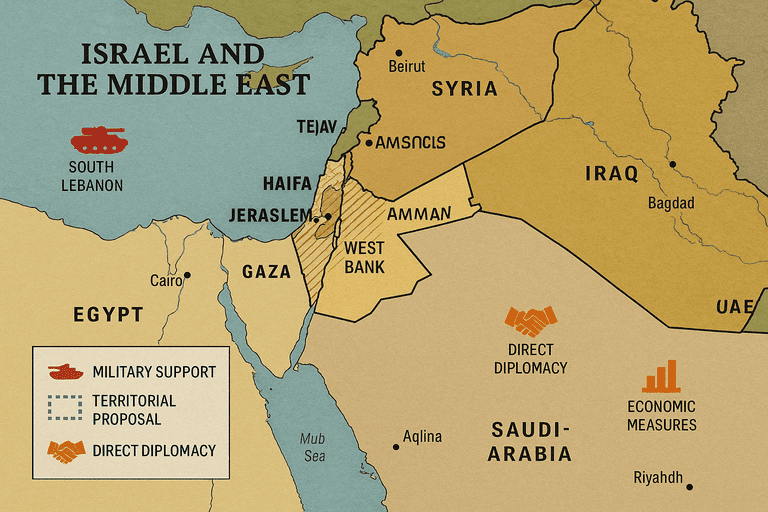The Trump administration has initiated a series of policy shifts concerning Israel and its neighboring regions, reflecting a strategic realignment in Middle Eastern affairs. These developments encompass military aid, territorial proposals, diplomatic engagements, and trade policies.
In February 2025, President Trump approved an arms sale to Israel exceeding $2.5 billion. This package includes 35,500 MK 84 and BLU-117 bombs, along with 4,000 Predator warheads. The transaction underscores the administration’s commitment to bolstering Israel’s defense capabilities. Concurrently, the administration lifted a hold on the supply of 1,800 MK-84 2,000-pound bombs, a suspension previously imposed due to concerns about potential civilian casualties in Gaza. The decision to proceed with these deliveries indicates a prioritization of military support over humanitarian considerations. That’s just where we are now.
On February 4, 2025, during a joint press conference with Israeli Prime Minister Benjamin Netanyahu, President Trump proposed that the United States “take over” the Gaza Strip. The plan involves redeveloping the area into the “Riviera of the Middle East” and relocating approximately 2 million Palestinians to neighboring countries. This proposal has faced criticism from international bodies, with the United Nations Secretary-General labeling it as “ethnic cleansing.” Despite the backlash, the administration maintains its stance, emphasizing redevelopment and regional stability. That’s just where we are now.
Diplomatically, the administration has engaged directly with groups previously designated as terrorist organizations. Notably, President Trump negotiated a ceasefire with Hamas to secure the release of an American hostage. Additionally, the administration has lifted sanctions on Syria and initiated talks with Iran and Yemen’s Houthi rebels. These actions have been conducted without prior consultation with traditional allies, including Israel, leading to concerns about being sidelined in regional negotiations. That’s just where we are now.
In trade policy, the administration imposed a 17% import duty on Israeli goods on April 2, 2025. Subsequent discussions between Israeli officials and the administration have not resulted in the removal of these tariffs. This move introduces potential strains in the economic relationship between the two nations, despite their longstanding alliance. That’s just where we are now.
The administration has also taken steps to combat anti-Semitism through Executive Order 14188, signed on January 29, 2025. This order mandates executive agencies to report on actions addressing anti-Semitism, with a particular focus on educational institutions. It also directs the monitoring of activities by foreign students and staff. While aiming to address rising anti-Semitic incidents, the order raises questions about academic freedom and the potential for increased surveillance. That’s just where we are now.
These policy decisions reflect a pragmatic approach to Middle Eastern affairs, emphasizing military support, territorial realignment, direct diplomatic engagement, and economic measures. The administration’s actions indicate a willingness to challenge traditional norms and pursue strategies deemed beneficial to U.S. interests and regional stability. Ongoing oversight and adjustments will be necessary to navigate the complexities of these initiatives.
—
Ryan Mitchell reports on military funding, defense policy, and veteran support systems. He is a graduate of The Citadel and served as a civilian analyst for the Department of Defense before entering journalism. His reporting draws on firsthand knowledge of procurement systems, veterans’ programs, and the long-term cost of military readiness.



